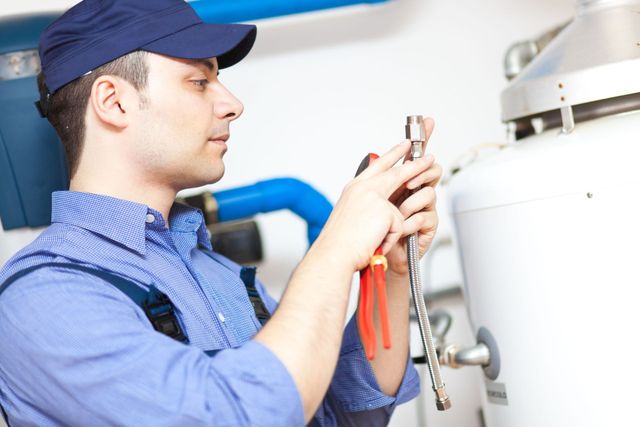Useful Techniques for Caring for Your Home's Hot Water System
Useful Techniques for Caring for Your Home's Hot Water System
Blog Article
Do you find yourself interested in ideas about Water Heater Maintenance Tips You Can't Afford to Forget?

Warm water is essential for everyday comfort, whether it's for a rejuvenating shower or cleaning dishes. To guarantee your warm water system runs efficiently and lasts longer, normal maintenance is essential. This write-up supplies practical ideas and insights on exactly how to keep your home's hot water system to stay clear of disruptions and expensive fixings.
Introduction
Preserving your home's warm water system could seem overwhelming, but with a few straightforward steps, you can ensure it operates efficiently for several years to come. This guide covers every little thing from understanding your hot water system to DIY upkeep ideas and recognizing when to contact specialist aid.
Importance of Preserving Your Hot Water System
Routine upkeep not just expands the lifespan of your hot water system but likewise guarantees it runs efficiently. Disregarding maintenance can result in reduced effectiveness, greater power expenses, and also early failing of the system.
Indicators Your Warm Water System Demands Upkeep
Recognizing when your warm water system requires focus can protect against significant concerns. Keep an eye out for signs such as inconsistent water temperature level, weird sounds from the heating system, or corroded water.
Purging the Hot Water Heater
Purging your hot water heater gets rid of sediment accumulation, improving efficiency and prolonging its life.
Checking and Changing Anode Rods
Anode rods protect against corrosion inside the tank. Inspecting and replacing them when broken is crucial.
Facility Issues Calling For Specialist Help
Examples consist of significant leakages, electrical issues, or if your water heater is consistently underperforming.
Routine Specialist Upkeep Advantages
Professional upkeep can consist of complete assessments, tune-ups, and guaranteeing compliance with safety and security criteria.
Checking and Adjusting Temperature Level Setups
Changing the temperature setups makes sure optimal efficiency and security.
DIY Tips for Maintenance
You can perform numerous upkeep jobs yourself to keep your hot water system in leading condition.
Looking for Leakages
Routinely inspect pipelines and connections for leakages, as these can lead to water damages and higher costs.
Comprehending Your Hot Water System
Prior to diving into upkeep jobs, it's valuable to recognize the fundamental components of your warm water system. Generally, this consists of the water heater itself, pipes, anode poles, and temperature controls.
Month-to-month Maintenance Tasks
Normal monthly checks can aid catch minor concerns before they intensify.
Testing Stress Alleviation Valves
Evaluating the stress relief valve ensures it operates correctly and stops excessive pressure build-up.
Insulating Pipelines
Shielding hot water pipes lowers heat loss and can conserve power.
When to Call a Professional
While do it yourself upkeep is advantageous, some problems call for professional experience.
Conclusion
Routine upkeep of your home's hot water system is important for performance, long life, and cost savings. By adhering to these tips and understanding when to look for expert aid, you can make sure a reliable supply of warm water without unexpected disruptions.
How to Maintain an Instant Hot Water Heater
Before tinkering with your hot water heater, make sure that it’s not powered on. You also have to turn off the main circuit breaker and shut off the main gas line to prevent accidents. Also turn off the water valves connected to your unit to prevent water from flowing into and out of the appliance. 2. When you’re done, you have to detach the purge valves’ caps. These look like the letter “T†and are situated on either side of the water valves. Doing so will release any pressure that has accumulated inside the valves while at the same time avoid hot water from shooting out and burning your skin. 3. When the purge valves’ caps are removed, you have to connect your hosing lines to the valves. Your unit should have come with three hoses but if it didn’t, you can purchase these things from any hardware or home repair shops. You can also get them from retail stores that sell water heating systems. Read the user’s manual and follow it to complete this task properly. When the hosing lines are connected, open the purge port’s valves. 4. You should never use harsh chemical cleaners or solutions when cleaning your unit. Make use of white vinegar instead. It should be undiluted and you’ll probably use about 2 gallons. 5. Now flush your water heater. This task should probably take about 40 minutes. We can’t give you specific directions for this because the procedure is carried out depending on the type, model and brand of your heater. With that being said, refer to the user’s manual. 6. When you’re done draining the unit, you have to turn off the purge port valves again. Remove the hosing lines that you earlier installed on each of the water valves. Put the valve caps (purge port) back in their respective places and be very careful so as not to damage the rubber discs that are found inside these caps. 7. Now that everything’s back in place, check your user’s manual again to find out how to reactivate your water heating system. 8. Once it is working, turn one of your hot water faucets on just to let air pass through the heater’s water supply pipes. Leave the tap on until water flows smoothly out of it. https://www.orrplumbing.com/blog/2014/september/how-to-maintain-an-instant-hot-water-heater/

As an avid reader on What Kind of Maintenance Do Water Heaters Need?, I think sharing that excerpt was a good idea. Enjoyed our blog posting? Please quickly share it. Help another person find it. I truly appreciate reading our article about How to Maintain a Hot Water Heater in a Few Simple Steps.
Click Here Report this page